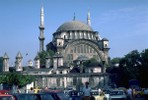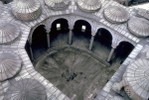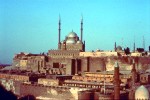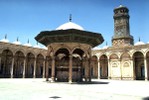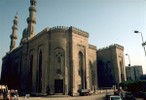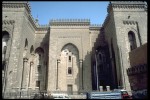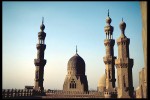Previous Lecture | Next Lecture
Concepts
The Turkish Baroque Style: The name given to the Ottoman architectural and decorative production from the mid eighteenth century until the third quarter of the nineteenth century. The style was concomitant with the gradual Westernization of the Ottoman elite's lifestyle and tastes is characterized by a profusion of curved, undulating motifs, imported European patterns, and unrestrained, extroverted plans.
Neo-Islamic Styles: The nineteenth century started with the first European military interventions in the Orient and ended with most of it under direct colonial rule. Architecture was affected by these new political realities and by the disciplinary developments in Europe where architecture had become an academic field with its rules and parameters. European styles began shaping the outlook of "Oriental" cities and the tastes of their inhabitants. Also European and European-trained designers became the masters of the building trades everywhere. These same professionals acted as the interpreters of the architectural heritage of the countries in which they worked. They documented, analyzed, and classified the structures they encountered, which permitted the introduction of these formerly-unexplored styles. Consequently, hybrid styles of building and decoration were produced in both East and West that borrowed freely and sometimes indiscriminately from the varied repertoires of non-western architectures, and blended them with various European structural, constructional, functional, and stylistic modes. The end results came to be known collectively as Oriental styles and individually we encounter various epithets such as the Neo-Moorish, Neo-Saracen, Neo-Mamluk, Neo-Mughal and so on.
Monuments
The Nuruosmaniye Mosque, Istanbul
Completed by Osman III in 1755, this is the first Baroque Ottoman mosque. Its prayer hall follows the rigid square, domed plan but its courtyard curves in a horseshoe form.
The Nusretiye Mosque, Istanbul
(1822-26). Is built by Mahmut II, the promoter of new order, after he managed to eliminate the Janissaries, hence the name which means "victory." It is one of the most extreme examples of the rococo dominance in late Ottoman architecture.
The Mosque of Muhammad Ali Pasha, Cairo Citadel
Built between 1830 and 1848, the mosque has a pure central-domed plan with two slender pencil minarets. Its surface articulation contrasts sharply in its eclecticism with its structural straightforwardness. The mosque is a rhetorical composition designed to emulate the early style of royal Ottoman mosques of Istanbul. The initial design of the mosque by the French architect Pascal Coste was to apply a neo-Mamluk style. Coste designed two mosques for Muhammad Ali: one in Alexandria and the Citadel mosque. Neither was ever built.
The Mosque of al-Rifai in Cairo
Begun in 1869 and designed in a neo-Mamluk style, the mosque was left unfinished until 1906 when Max Herz Bey, the famous restorer of Islamic monuments in Cairo completed it. It stands opposite the grand mosque of Sultan Hasan as an attempt of the Khedival family to measure up to the achievements of the Mamluks.
The Dolmabahçe Mosque, Istanbul
(1852-53). Is built by the first of the Balian family of architects, Karabet, as an adaptation of a neo-classical style to the requirements of a small royal mosque. Its minarets take the shape of Corinthian columns. It, and the palace that gave it its name, are two examples of the strong influence of Western models in late Ottoman architecture.

